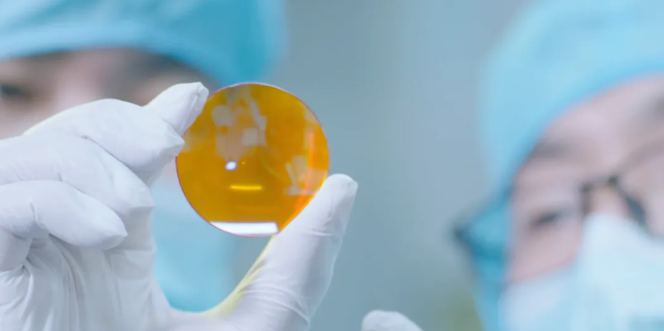Agricultural plastic film | Environmentally friendly degradable film | Self adhesive protective film
Conductive film | High barrier cling film | Heat shrink film
Welcome to Changzhou Hefeng Packaging Materials Co., Ltd!
Agricultural plastic film | Environmentally friendly degradable film | Self adhesive protective film
Conductive film | High barrier cling film | Heat shrink film

Optical thin films are ubiquitous in modern technology, from mobile phone lenses to precision lasers, from high-definition displays to high-efficiency solar cells. Their performance directly affects the performance of the final product. The key to determining the quality and production efficiency of optical thin films lies in the core equipment used in their production process. Today, let's talk about the core technologies and future development of these key devices.
Core equipment one: Coating equipment
Coating equipment is the "heart" of optical film manufacturing, directly determining key indicators such as film thickness uniformity and density. There are currently several mainstream types:
Electron beam evaporation coating equipment: using high-energy electron beams to bombard and heat materials (film materials), causing them to evaporate and deposit onto substrates. Its advantages are fast evaporation rate and high purity of the film layer, making it particularly suitable for producing high-precision anti reflective films, reflective films, etc. However, this technology also faces challenges such as high film stress and difficulty in controlling uniformity.
Magnetron sputtering coating equipment: By applying a magnetic field near the target material, the ions in the plasma are guided to bombard the target material, and the target material atoms are "sputtered" and deposited onto the substrate. The thin film prepared by this method has strong adhesion, controllable composition, and good uniformity, and is widely used in hard coatings, optical filters, and other applications. The disadvantage is that the equipment cost is high, and there is a risk of introducing impurities during the sputtering process.
Plasma enhanced chemical vapor deposition (PECVD): using plasma to activate reactive gases, causing them to undergo chemical reactions on the substrate surface and deposit a film. The biggest advantage is the ability to achieve low-temperature deposition, which is very suitable for temperature sensitive substrates such as plastics. But its process is relatively complex, requiring precise control of multiple parameters such as gas flow rate, pressure, temperature, etc.
Core equipment 2: Detection equipment
High quality films cannot be separated from precise 'physical examinations'. The testing equipment is responsible for ensuring that the optical and physical properties of the film meet the requirements:
Spectrometer: measures the transmittance and reflectance of thin films at different wavelengths, and evaluates their optical performance by analyzing spectral curves to determine if they meet the standards.
Ellipsometer: Based on the principle of the interaction between polarized light and thin films, it can accurately measure the core optical constants such as film thickness, refractive index, extinction coefficient, etc.
Stepper/profiler: mainly used to measure the morphology and small thickness changes of thin film surfaces, it is an important tool for judging the uniformity and surface quality of thin films. Development trend: smarter, more precise, and greener
The development direction of optical thin film manufacturing equipment is clearly visible:
Intelligence and automation: Sensors monitor parameters such as temperature, pressure, and gas flow in real-time, combined with intelligent algorithms for data analysis and automatic optimization of equipment operation status, with the goal of achieving more precise control, improving production efficiency, and product stability.
High precision and multifunctional integration: The market's demand for high-performance thin films drives the continuous improvement of equipment accuracy (such as film thickness control accuracy and measurement accuracy). At the same time, devices are also developing towards multifunctional integration, such as integrating coating, online detection, and even repair functions together, reducing processes and improving efficiency.
Green environmental protection and energy conservation: With increasingly strict environmental requirements, equipment manufacturers are paying more attention to using environmentally friendly materials and energy-saving processes, and are committed to reducing energy consumption and pollution emissions in the production process. Realistic challenges faced
Despite the broad prospects, the development of key equipment for optical thin films also faces severe challenges:
High end equipment relies on imports: Currently, China still mainly relies on imports in the field of high-precision and high stability high-end coating and testing equipment. Foreign manufacturers have advantages in core technology accumulation and process maturity, which to some extent restricts the independent development of the domestic optical thin film industry.
Large R&D investment and long cycle: The R&D of such equipment requires huge capital investment, profound technical accumulation, and high-end talents, and the R&D cycle is long. Overcoming technical challenges such as high-precision control and equipment stability in complex environments also comes with high risks and difficulties.
Conclusion
The technological level of key equipment for optical film production is the core driving force for promoting the upgrading of the entire industry. From coating to testing, every advancement in equipment directly affects the performance and production efficiency of thin films. Intelligence, high-precision integration, and greenization are the main themes of future development. At the same time, we also need to face the bottleneck of localization of high-end equipment and the difficulty of research and development. Increasing investment, focusing on breakthroughs in core technologies, and enhancing independent innovation capabilities are the necessary steps for the domestic optical thin film industry to move towards high-quality development.
Welcome to Changzhou Hefeng Packaging Materials Co., Ltd!
Mobile phone: 15895061333
Email: 115555372@qq.com
Address: Moujia Village, Zhenglu Town, Tianning District, Changzhou City
Copyright © 2025 Changzhou Hefeng Packaging Materials Co., Ltd